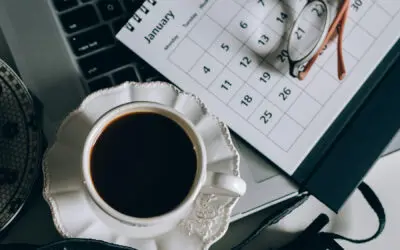How specialty coffees like Gesha (Geisha) and Bourbon varietals find their environmental fit, rising up to redefine the market.
What if I told you that the world’s most expensive coffee variety was discovered by accident, misidentified for decades, and nearly disappeared into obscurity before changing the entire specialty coffee industry? This is the story of the Geisha varietal, but it’s also a story about how we make decisions, how we assign value, and how tiny genetic variations can lead to exponential differences in outcomes on the road to understanding varietals.
In 2004, Hacienda La Esmeralda in Panama submitted a coffee to the Best of Panama auction that would score higher than any coffee in the competition’s history. The price it commanded – $21 per pound – was considered astronomical at the time. (By 2019, Geisha from the same farm would sell for over $1,000 per pound.) What made this coffee different? The answer lies in a decision made half a century earlier, on a completely different continent.
In 1936, a British colonial officer named Frank Deakin was collecting coffee samples in Ethiopia’s Gori Gesha forest. Among these samples was a variety that would eventually bear the forest’s name (though its spelling would be altered). The seeds made their way to research stations in Tanzania, then to Costa Rica, and finally to Panama in the 1960s. For decades, it was just another coffee variety, unremarkable except for its low yield and susceptibility to disease – the kind of characteristics that usually doom a varietal to extinction.
Dr. Sarah Lewis, a plant geneticist at the University of California, Davis, explains why what happened next is so improbable. “The odds of a low-yielding, disease-susceptible variety surviving long enough to reveal its hidden potential are incredibly small,” she says. “It’s like finding out that the scrappy understudy is actually a virtuoso – but only if you give them exactly the right stage, with exactly the right acoustics, at exactly the right moment.”
This brings us to what social scientists call “environmental fit” – the idea that success often depends less on inherent qualities than on how well those qualities match their environment. In the case of Geisha, the high altitudes and unique microclimate of Boquete, Panama, proved to be exactly the right conditions to express its extraordinary flavour potential.
But here’s where the story gets really interesting. In blind tastings, experienced coffee professionals consistently rate Geisha varieties higher than other coffees. Scientists have conducted studies showing that even when tasters don’t know they’re drinking Geisha, they tend to give it exceptional scores. “It’s not just hype or marketing,” they say. “There are measurable differences in the chemical composition of Geisha that result in more complex flavour compounds.”
This phenomenon – where objective quality and market value align in unexpected ways – is what economists call a “quality cascade.” Once a product achieves a certain level of recognition for excellence, it creates a feedback loop that amplifies both its perceived value and its actual quality. Farmers who grow Geisha can command higher prices, which allows them to invest more in production, which leads to better coffee, which justifies higher prices, and so on.
Consider the contrasting story of Bourbon, one of the world’s most important coffee varieties. Named for the island of Réunion (formerly Île Bourbon), east of Madagascar, this variety has been the backbone of specialty coffee for centuries. It’s the parent or grandparent of almost every other arabica variety we drink today. Yet a cup of Bourbon typically sells for a fraction of what Geisha commands.
This disparity tells us something profound about how we assign value. Bourbon is objectively more important to the coffee industry – without it, most of our favourite varieties wouldn’t exist. But Geisha offers something else: a dramatic narrative of discovery, rarity, and transformation. It’s not just a coffee; it’s a story we can tell ourselves about value, about connoisseurship, about the possibility of hidden excellence.
The lesson here isn’t just about coffee. It’s about how excellence emerges from the intersection of genetics, environment, human perception, and market dynamics. It’s about how value is created not just by what something is, but by how we discover, understand, and share it.
The next time you hear about a coffee selling for hundreds or thousands of dollars per pound, remember: you’re not just paying for the beans. You’re paying for a particular combination of circumstances – genetic, environmental, economic, and social – that come together to create something extraordinary. And that, perhaps, is what makes it worth the price.Have you tried Geisha? Are you familiar with the Bourbon varietal? If so, tell me about it in the comments. Also, if you haven’t already, be sure to subscribe to The Coffee Authority Weekly because knowledge makes the coffee sweeter.



0 Comments